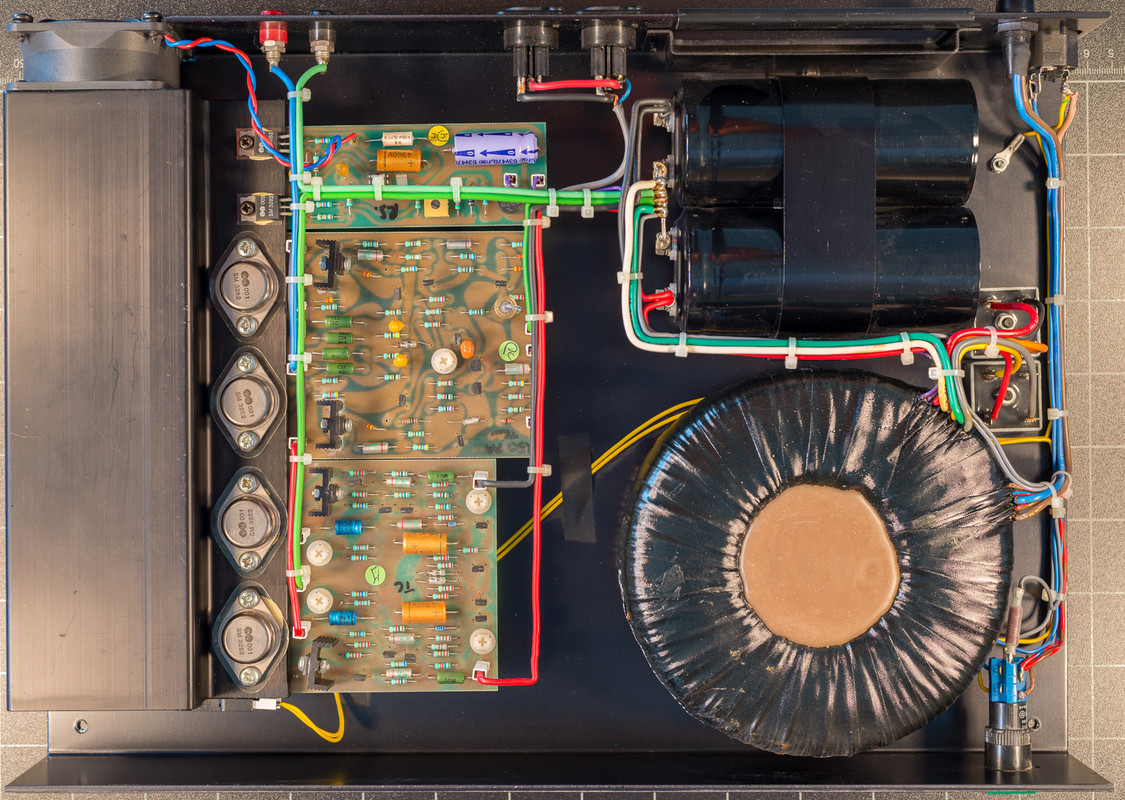laverda
pfm Member
Oooh, she's a beast, Graham! What are the specs on those traffos, and how are you powering the front ends?
The trans are what Les supplied, AST jobbys. 530va 2 x 42-0-42 = 60vdc rails to the outputs (both secondary paralleled) and the front end from this main board supply via the links to the regs. With luck I'll be listening to it later today....








